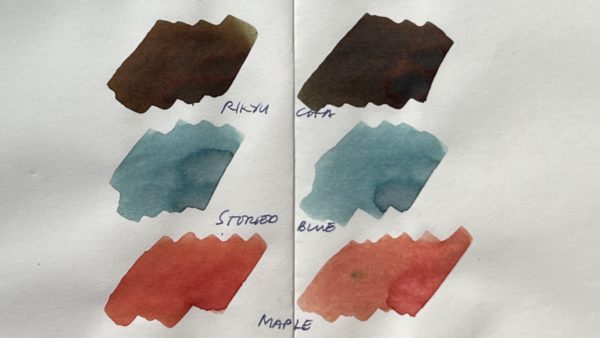Better than the Cauliflower Festival, whose billboard waved goodbye to me as I was zooming towards Shanghai’s Pudong airport. I was in Shanghai for work, but was lucky enough to be billeted a five-minute walk away from Fuzhou Road.
Fuzhou Road is shop after shop of books, office supplies, Chinese calligraphy supplies… and fountain pens. All of the shops I visited had, at the very least, a dusty Hero or two on display. I saw specialty paper, seals, ink in pots, ink in bottles, ink in blocks sitting on trays, brushes the size of chihuahuas. I saw Dukes and Heros and Picassos and King Crowns. What made me smile was that these shops weren’t filled with art students, but with middle-aged men who looked like they’d just strolled in from work and needed a new fountain pen to cheer them up.
My favorite find is the Duke Beijing Opera mini-me.
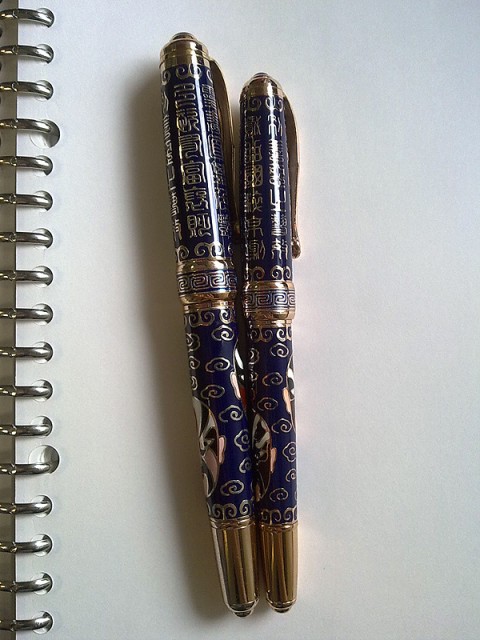
The Duke Beijing Opera was one of my first big pens. I like looking at them side by side, and noting the differences.
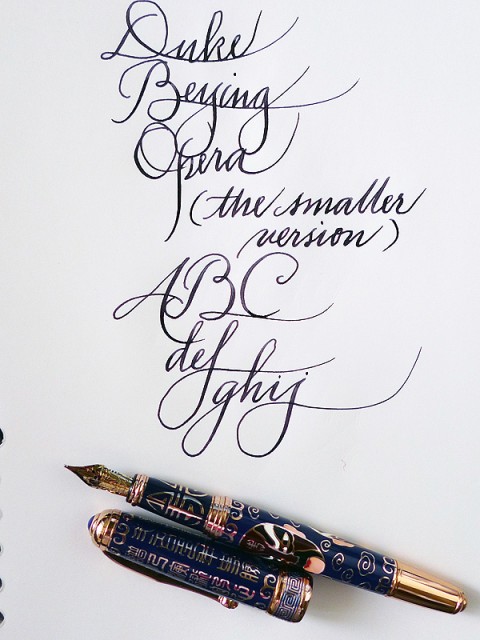
The flex I noticed in the bigger version is more pronounced in the smaller. And because it’s smaller, it’s less tiring to use for long periods.
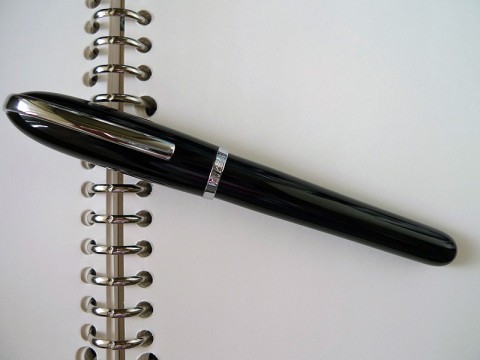
Surprise. A minimalist Duke pen. I have become so used to the scrollwork and embossed pandas and what-have-you that it is a pleasant shock to see restraint.
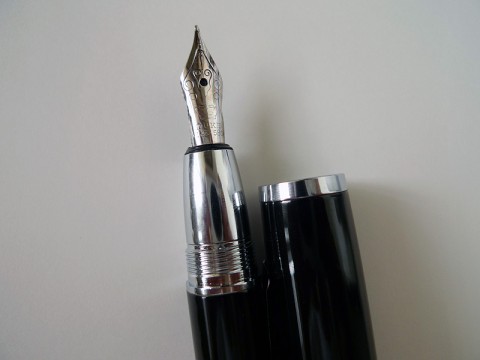
The metal section tapers from the threads to the collar. This might present a problem for people who grip their pens close to the nib; otherwise, it’s as comfortable as a metal section can get.
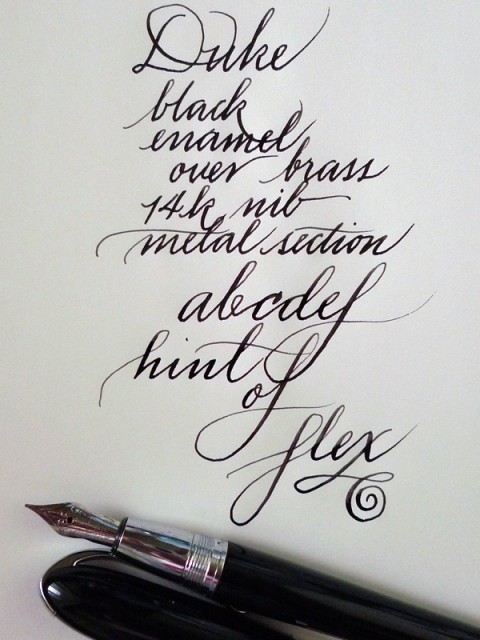
The Black Duke (that’s my name for it, I have no idea what its official name is) sports the same 14k nib as the Duke Beijing Opera, but with a wash of rhodium. It’s definitely flex-friendly.
Both pens come with converters, and are fine examples of modern Chinese craftsmanship.


